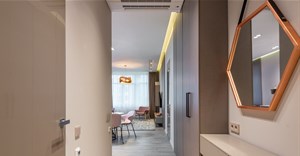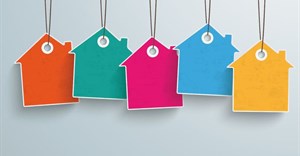
Subscribe & Follow
Green homes - features that add investment value

With many young buyers preferring homes with eco-friendly installations, new developments are arising to cater to this growing demand. Even older generations are looking to have more energy-efficient homes owing to rising electricity costs and uncertainty of supply from the national grid.
But, with a variety of products available on the market, it can be difficult to know which features are worth the investment. Working with an experienced professional can help homeowners decide which additions are worth the investment. Real estate practitioners know what buyers are asking for and can guide homeowners into making additions that will appeal to buyers in their area.
Home insulation
As a rule of thumb though, certain green features tend to add more value than others. For example, updating the home’s insulation is always a worthwhile investment. Insulating the roof and ceiling will keep a home 5°C warmer in winter and 10°C cooler in summer, which will significantly lower the home’s heating and cooling costs. A lot of the newer insulation also has sound-proofing qualities which is an appealing feature for many buyers.
Solar panels are also an appealing feature in warmer parts of the country. Clients who are interested in solar panels should consult an expert in the field and do plenty of research before installing the panels. This is generally an expensive addition, so be sure that the solar panels are proven to work and are reliable.
A somewhat less desirable addition is energy efficient windows. These can often be an expensive upgrade that can take as long as 15 years before the energy-cost savings cover the original investment. It might not be necessary to purchase specially-designed energy efficient windows as long as all windows and doors are properly fitted and are well-maintained so that no heat is lost and that no cool air is filtering in.
Eco-friendly redecorating
Another emerging trend that might not add quite as much investment value as the features mentioned above is eco-friendly redecorating. Some sellers remodel certain rooms using renewable materials in the new design. While sustainable hardwood flooring or recycled materials for kitchen cabinets and countertops will appeal to an environmentally conscious buyer, it may not carry as much value for the average consumer. If you are doing these renovations purely for the investment returns, then I would recommend consulting a real estate practitioner before undertaking these kinds of renovations.
In the end, whether or not energy-saving upgrades increase a home’s asking price is largely affected by how the property is marketed. Many of these improvements are not visible when a buyer walks through a home or pages through listing photos online. A real estate professional can highlight the features so that buyers can see the value of the eco-friendly renovations.
For those who are still unsure about going ahead with eco-friendly renovations, energy-efficient features can really set a home apart when a buyer is narrowing down their options. There is minimal downside to making your home green. In the long term, you could increase your home’s value, lower your electricity costs, and protect the environment. Going green is really the best choice a homeowner can make.















